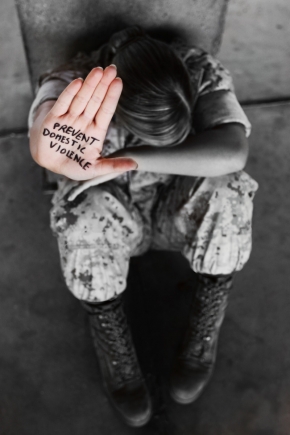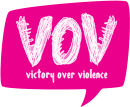Intimate Partner Violence

IPV Defined
Intimate partner violence (IPV) occurs between two people in a close relationship, including current and former spouses and dating partners.
IPV can occur in a myriad of forms, appearing along a broad continuum of emotional and physical experiences, and as a single incident of violence or an ongoing pattern of abuse.
IPV can be defined within four major categories covering both passive and physical forms of violence.
Physical
-
Physical violence occurs when one partner physically hurts or attempts to hurt the other person through hitting, kicking, biting or some other form of physical means.
- Sexual violence occurs when one partner forces the other person into a sex act without their consent.
Passive
-
Threats of physical or sexual violence through words, gestures or weapons are a form of passive violence in which one partner communicates a threat in order to intimidate or control.
- Emotional abuse occurs when one partner threatens to withhold the other person’s access to possessions or loved ones, or undermines their sense of self-worth. Examples of emotional abuse range from stalking, name-calling, and intimidation, to denying a partner the opportunity to contact friends or family.
Often, IPV starts passively with emotional abuse. However, this behavior can lead to physical or sexual assault. Also, several different types of IPV may occur simultaneously.
IPV in the United States
IPV is a serious problem in the United States:
-
On average, twenty-four people per minute are victims of rape, physical violence, or stalking by an intimate partner in the United States. Over the course of a year, that adds up to more than 12 million women and men.
-
Studies have found that nearly 3 in 10 women and 1 in 10 men in the U.S. have experienced rape, physical violence, and/or stalking by a partner that has impaired their ability to function optimally.
-
In 2007, the Department of Justice reported that IPV resulted in 2,340 deaths or 14% of all homicides. Of these 2,340 deaths, 1,638 or 70% were females and 702 or 30% were males.
- It is estimated that the economic cost of IPV dues to associated medical care, mental health services, and lost productivity exceeds $8.3 billion annually.
As dramatic as these numbers appear, they underestimate the problem as many victims of IPV do not report the abuse to police, friends, or family. Victims often get trapped into thinking that others will not believe them or that the police simply cannot help.
The Physical and Emotional Impact of IPV
As a victim of IPV continues to be abused, the harmful effects become increasingly severe.
Physical injuries range from minor trauma such as cuts, scratches, bruises, and welts to more serious assaults resulting in broken bones, internal bleeding, and head trauma, and even death or disabilities.
The emotional symptoms of IPV trauma may include flashbacks, panic attacks, and trouble sleeping. Victims often have low self-esteem, have a hard time trusting others, and being in relationships. The unresolved feelings of anger and stress can lead to eating disorders, depression, and suicidal thoughts or actions.
IPV victims may try to cope with their emotional trauma in unhealthy ways such as through smoking, drinking, taking drugs, or having risky sex.
Risk Factors
While not a guarantee that IVP will occur, the following risk factors are associated with greater likelihood of a perpetrator hurting one’s partner.
- A history of violent or aggressive behavior
- Personally experiencing or witnessing violence as a child
- Heavy alcohol or drug abuse
- Unemployment or other high stress life experiences
How to Prevent IPV
There is a lot to learn about how to prevent IPV. Research has shown that strategies to promote healthy behaviors in relationships are important and that programs to teach young people such behaviors for dating can help prevent violence before it occurs.The goal of IPV prevention strategies should be primary prevention - preventing the violence from occurring in the first place. Prevention efforts should be aimed at promoting protective factors at multiple levels of influence to build a culture of peace at individual-, relationship-, community- and societal-levels.
In the future, VOV will highlight the best of these programs, introduce you to creative individuals putting these prevention strategies into action, report the latest research findings, share the best ideas for applying these lessons to our daily lives, and share some of your inspiring personal stories of victory over IPV that are helping to build a culture of peace. Keep checking the VOV Blog and Stories sections for the latest updates and sharing them throughout your social network.
Join the Victory Over Violence Campaign
Every day, amazing stories of victory over violence take place. If shared, these stories have the power to inspire change in countless others. VOV is here to help you learn about the issues and get involved at a pace that works for your lifestyle.
Learn More – Knowledge is Power
The first step in achieving victory over violence is getting informed.
- Learn about VOV Issues
- Check out the VOV Blog
- Follow VOV on Facebook and Twitter
Take Action – Spread the Word
Whenever you encounter something interesting on the VOV site, share it with the friends and acquaintances in your social network.
- Share a VOV Blog post
- Share one of our personal stories about achieving victory over violence
- Share your own personal story about achieving victory over violence
Keep Learning and Stay Engaged
We recommend visiting these websites to learn more and take further action toward achieving victory over intimate partner violence.
- CDC Facebook Page on Violence Prevention, facebook.com/vetoviolence
- National Domestic Violence Hotline, 1-800-799-SAFE (7233), 1-800-787-3224 TTY, ndvh.org
- National Coalition Against Domestic Violence, ncadv.org
- National Sexual Violence Resource Center, nsvrc.org
- Family Violence Prevention Fund, endabuse.org
Image Source: (Attribution via Wikimedia Commons)
References:
Black MC, Basile KC, Breiding MJ, Smith SG, Walters ML, Merrick MT, Chen J, Stevens MR. The National Intimate Partner and Sexual Violence Survey (NISVS): 2010 Summary Report. Atlanta, GA: National Center for Injury Prevention and Control, Centers for Disease Control and Prevention; 2011.
Centers for Disease Control and Prevention. Costs of intimate partner violence against women in the United States. Atlanta, GA: National Center for Injury Prevention and Control, Centers for Disease Control and Prevention; 2003. [cited 2013 Feb 8]. Available from www.cdc.gov/ncipc/pub-res/ipv_cost/ipv.htm.
Center for Disease Control and Prevention. Understanding Intimate Partner Violence: Fact Sheet. [online]. [cited 2013 Feb 8]. Available from http://www.cdc.gov/ViolencePrevention/pub/IPV_factsheet.html
Department of Justice, Bureau of Justice Statistics. Intimate partner violence [online]. [cited 2013 Feb 8]. Available from http://bjs.ojp.usdoj.gov/index.cfm?ty=tp&tid=971#summary.
Krug EG et al., eds. World Report on Violence and Health. Geneva, World Health Organization, 2002. [cited 2013 Feb 8]. http://www.who.int/violence_injury_prevention/violence/world_report/en/summary_en.pdf.
Max W, Rice DP, Finkelstein E, Bardwell RA, Leadbetter S. The economic toll of intimate partner violence against women in the United States. Violence and Victims 2004;19(3):259–72.


Comments:
danitta nelson
10/29/2013
Wow, I am absolutely shocked by the average percent of women who are being physically, verbally, and emotionally abused. Not only is IPV a big issue within itself, but to have twenty-four people per minute become victims of rape, or victims of physical violence, and/or enduring stalking incidence by their partners, is crazy to me and sad. And to her this big number about the victims in the United States, that is more then to 12 million women and men… I have experience with being physically abused and stalked, and it is extremely scary. So I can relate to this statistic.. IPV must stop!
frankie kington
09/23/2016
I am really determined as a Leader and an ambassador for world peace with V.O.V and a SGI(Soka, Gakkai, International ) to determined through prayer and action to challenge these issues in our societies and communities no matter where we live in the world. We are all responsible to have the courage to create real change in our communities.lets do this,lets get to work. !fk